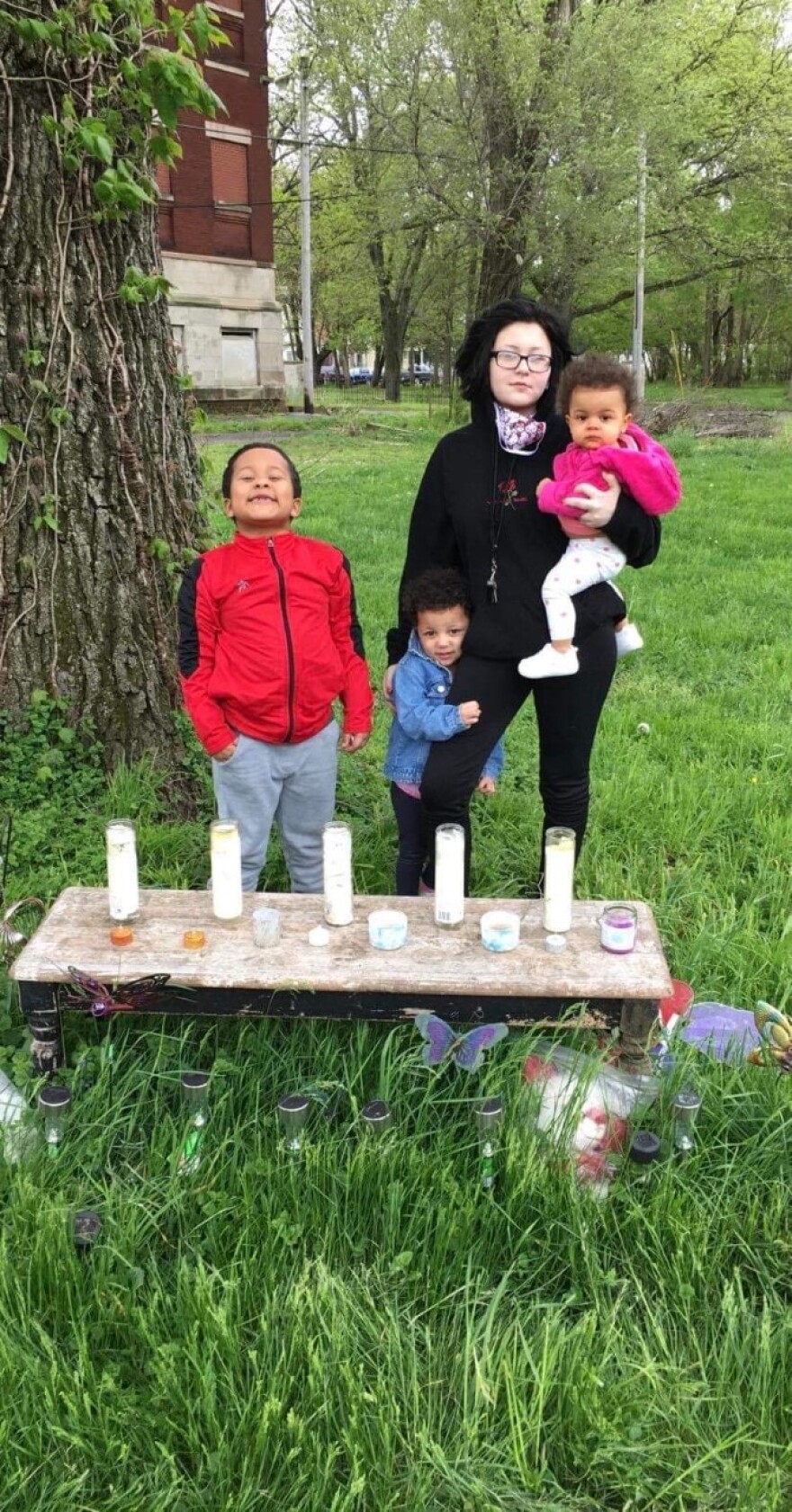It’s almost become a cliché, the idea that life can change in an instant.
But it can. And it did for Marni Rora on February 14, 2019.
Rora was 52 years old and just starting to dream about retirement. She had a boyfriend. She owned her own home. And she had the freedom to come and go as she pleased in life, having forgone the route of marriage and kids.
But then on the morning of Valentine’s Day, three years ago, three shots rang out on West John Gwynn Ave on Peoria’s south side. Rora’s niece, Kayla Fannon, was shot to death by an ex-boyfriend. He then turned the gun on himself.
Rora got the call while she was at work. And even as she struggled to wrap her mind around what had happened to niece, she was certain what would happen to the children Fannon left behind.
“I knew right away they would be mine,” Rora said.
So, at the age of 52, Rora became a mother for the first time. Still grieving the violent loss of her niece, she took in three of Fannon’s four children. The youngest was just three weeks old.

Now instead of planning her retirement, Rora spends her days packing lunches and chasing kids down for baths. Her biggest concern is living long enough to see the kids into adulthood. Rora doesn’t want them to lose another mother too soon.
The ripple effect
A single act of violence can claim many victims. Like a stone thrown into water, the effects ripple outward; through families, neighborhoods, entire cities. Experts call that phenomenon residual trauma.
Samantha Schubach is the supervisor of the Trauma Recovery Program at OSF Saint Francis Medical Center in Peoria. Schubach said in a city like Peoria that recently ranked the 15th deadliest city in the nation, residual trauma has a wide scope.
“It’s not just that we have somebody that is shot and killed, it’s the family dealing with all those things. And it’s the community, and it’s the friends, and it’s the police investigation into that,” Shubach said.
Peoria police investigated a record 34 homicides in 2021. The previous high was 25, set in 2019. Peoria Police Chief Eric Echevarria knows the tolls associated with those kinds of numbers; the innumerable ripples set off by each violent death.
Echevarria is a 20-year veteran of law enforcement who took over as Peoria's top cop in August. He's vowed to bring violence in the city under control. But even when police can solve a crime, Echevarria said, it doesn't help to ease residual trauma for those left in its wake.
“It doesn’t end right there, even if there’s an arrest made. It still continues. It’s an everyday occurrence for them,” Echevarria said.
An act of violence doesn't end when the shooting stops or when a perpetrator goes to jail. It lives on in the individual memories of people and the collective memory of place. Echevarria worries about the cost of carrying all that pain around.

“I don’t think you can totally put it away,” he said. “I think at some point that trauma comes back. There’s a reminder, something happens that just brings it back.”
The power of memory
For Rora, those reminders are everywhere; In the sound of little footsteps pounding down the hall, or in the face of Fannon's oldest daughter, who, at fifteen, looks almost exactly like her mom.
Fannon had made mistakes as a parent, Rora said. Before she died, Fannon was still reeling from the loss of her own mother. Rora said Fannon was making poor decisions and hanging around the wrong people. At the time of her death, none of Fannon's children were in her custody.
But she was working to get them back. And Rora said Fannon was especially focused on building trust with her oldest daughter.
“Right before Kayla was murdered, they were seeing each other more and a bond was being built,” Rora said. In the aftermath of Fannon’s death, her oldest daughter was devastated, Rora said.
Now Fannon's daughter will never know what could've come of the relationship she was building with her mother. But she does understand how her mother died and she struggles under the weight of that knowledge. Rora said the girl deals with anxiety and PTSD.
Children can have an especially hard time with residual trauma, according to Schubach. Losing a parent can change the way a child understands their place in the world. “I have to figure out who my identity is without that person,” Schubach said of kids.
Fannon's other children are still too young to understand what happened their mom. Rora said she lives in fear of the day they're old enough to Google their mother's name. She doesn't want Fannon's death to be only thing the younger girls know of their mom. The youngest, who was three weeks old when Fannon was killed, has no memories of her mother at all.
So Rora makes Fannon a part of their lives, sharing stories and pictures with the kids. “We’re just trying to keep the memory of her alive,” she said.

Rora said that’s lead the younger girls to understand that she’s their mother now…but also that she’s kind of not. And they use that distinction to their advantage in a way particular to little girls.
“The girls both call me mom. I’m Marni when they’re mad at me, though,” Rora said with a laugh. “Flip a coin and it could go either way.”
Rora is both "mom" and "Marni." She's the caregiver, shepherding three girls through a landscape of loss. But she also is a victim herself, navigating through unimaginable trauma, grief, and change.

Rora is in therapy, and it helps. But while there are times that she feels the pain of Fannon's loss less than others, Rora said she knows it's a pain that will never go away.
Peoria’s police chief worries about an entire city full of people trying to find a place for their pain.
“How long do they put it away?” wondered Echevarria. “That’s the real question. They may put it away for a moment, but where does it resurface again?”
Rora has similar concerns for her own children. She worries about the pain that will surface when they're old enough to realize the true magnitude of their loss. She worries about the pain when their mother isn't there for their first dance, for graduation, or to walk them down the aisle.
“They’re going to miss their mom being there, and it’s really going to affect them down the road. Not so much now, because they don’t understand,” Rora said.
And so, the pain of those three gunshots that rang out three years ago today will continue to ripple outward. It will travel through generations, affecting so many more lives than the one life lost that day.
This story has been updated to remove the claim that Fannon was stalked and harassed by her ex-boyfriend prior to her death. The claim is disputed by the man's family and cannot be confirmed.

